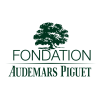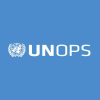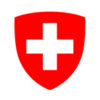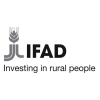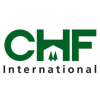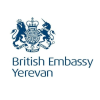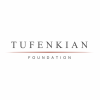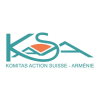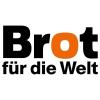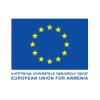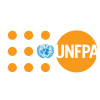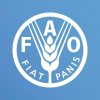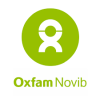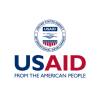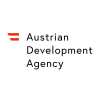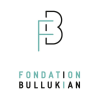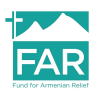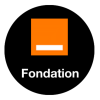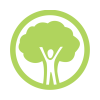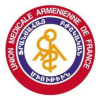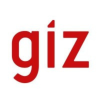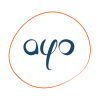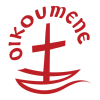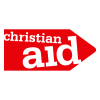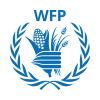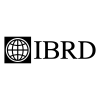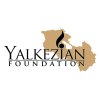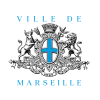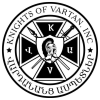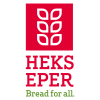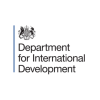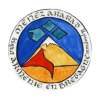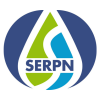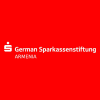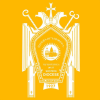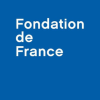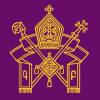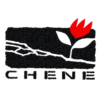Beneficiary Mobilisation
With the support of our international partners, we carried out over 370 projects throughout Armenia with a particular focus on earthquake-stricken areas, villages populated by refugees, and remote communities.
Wherever we initiate a project, the first thing we do is community mobilisation. Thus, we assist villagers in getting organized and transferring relevant knowledge and skills to potential leaders. With the help of Shen regional representatives, the local activists take an active role in participatory needs assessment, planning, implementation, and evaluation of the projects and their further maintenance and operation. The most proactive Community Action Groups (CAG) become the basis for Community Based Organisations (CBO).
In cooperation with the private sector, 26 rural communities from all marzes of Armenia got a broadband internet connection and accessibility to newly established computer centers. We implemented this project from 2009-2014 with the support of Orange Armenia LLC (France Telecom). After implementing this pilot project, the internet has become available in most villages of Armenia in recent years. It enables rural populations, including our local partner Civic Action Groups, to access alternative information.
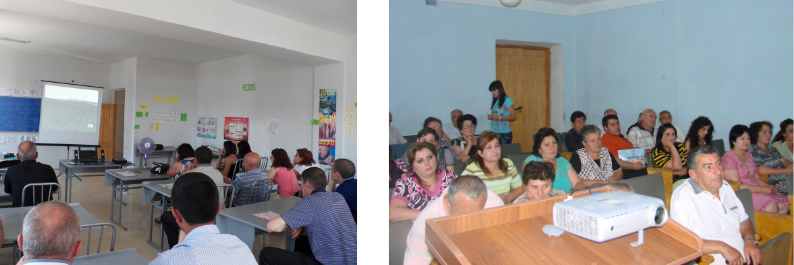
Social Infrastructures
"Shen" has started implementing social infrastructure rehabilitation projects since the beginning of the 90ies of the XX century. The selection of a specific social project is based on the principle that it has to be linked to the further economic development of the community. The basic principle for Shen intervention in this area is a substantial mandatory community contribution to the social infrastructure rehabilitation projects.
With the generous support of our sponsors and partners, we renovated and furnished 28 school gyms and Sports grounds, 29 kindergartens, and 21 community centers. We provided modern equipment to 17 community healthcare centers. In six villages, we constructed a network of street lighting, and in another six communities – bridges, as well as built 60km of inter-village roads, thus improving transportation. The problem of fresh and irrigation water supply is present in the majority of the communities in Armenia, negatively impacting the social and economic life of the villagers. As a response, we undertook to construct and renovate potable and irrigation water systems in 63 communities.
The community centres in Armenia may accommodate the local municipality (village mayor's office), public entertainment room(s), conference hall, art clubs, computer centre, etc. Almost all villages have buildings of municipality centres, mainly constructed during the Soviet period. However, in 90ies of the last century, they all needed significant renovation.
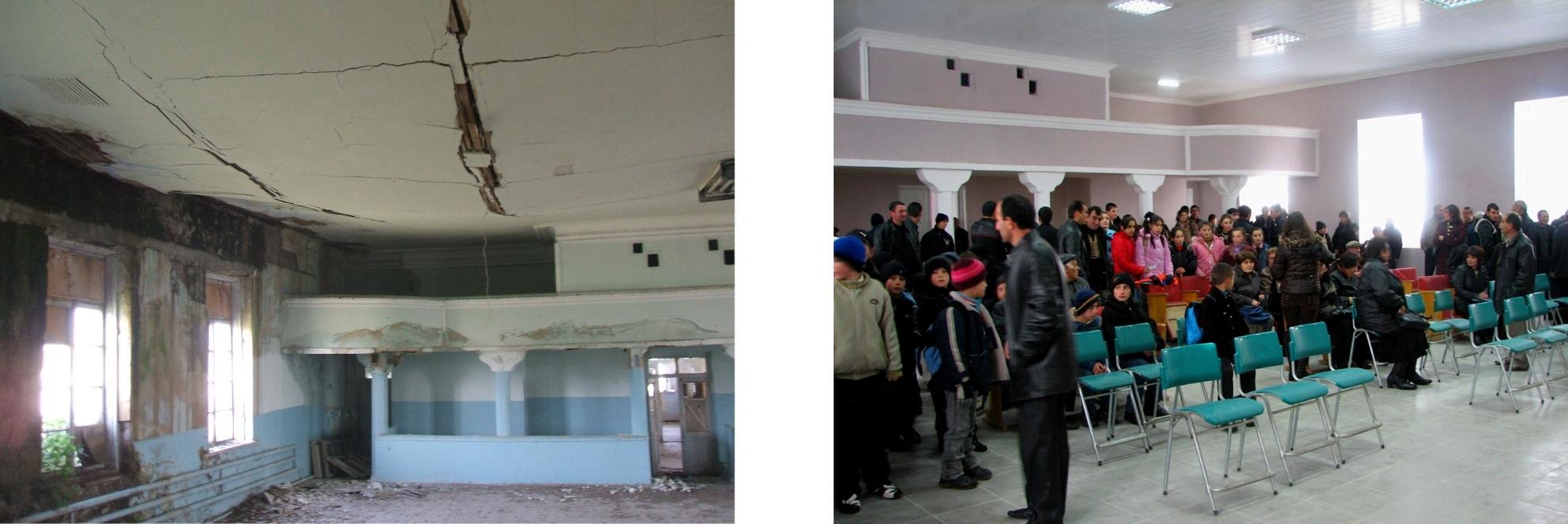
After the independence, village kindergartens were passed on to local municipalities. However, because of scarce resources, most village kindergartens stopped operating. The non-operation of those kindergartens brought to further deterioration of its buildings. Thus in many beneficiary villages, renovation and operation of kindergartens also allow rural women to get jobs. In the regions where agriculture is more developed or some non-farming industries exist, working women can earn as much as men. Consequently, the women, free from taking care of their children, can work and thus complement families' income.
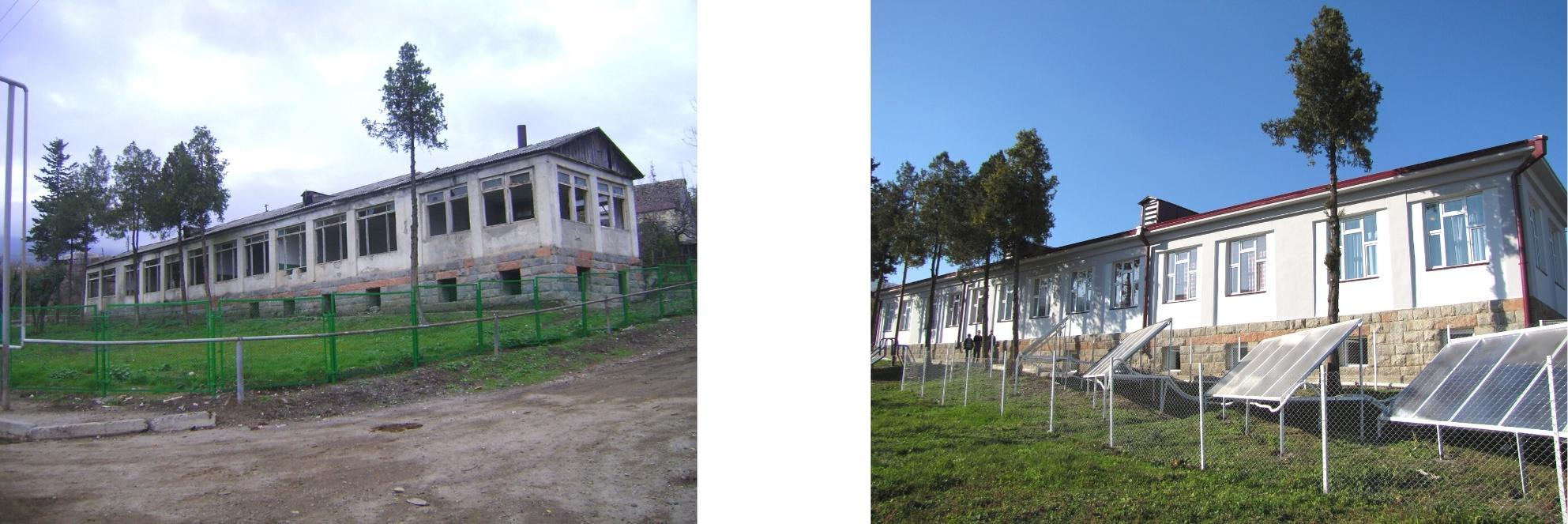
Drinking water is one of rural Armenia's most acute problems for several reasons, the deteriorated pipelines being the major one. Shen projects on rehabilitating old and/or constructing new pipelines in its beneficiary rural communities to ensure one of the basic livelihood standards.

"Shen" takes care of the recreation and education of children from low-income families. In 1999 we established the Children's Recreation Centre in Yeghnajour, Shirak marz, based in the local school building that Shen reconstructed for that purpose. About 150 beneficiary children from Gyumri and other towns of Shirak marz have their pastime at the Centre, enjoying the fresh air, healthy food, and having fun working on the farm.
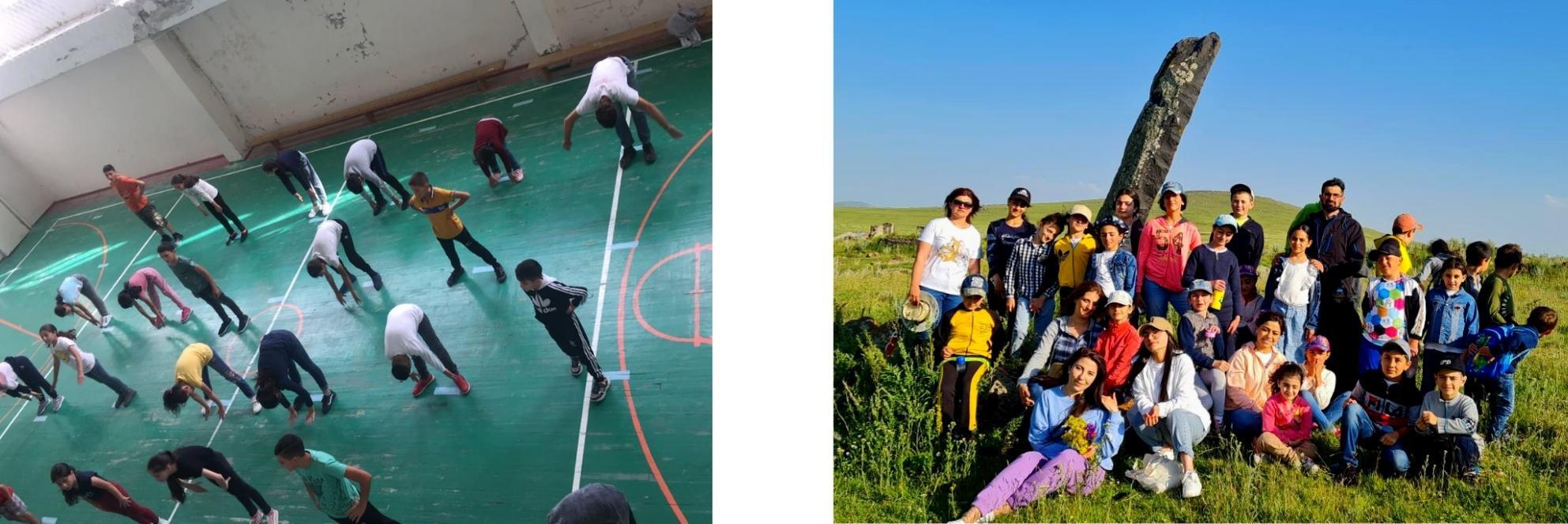
The youth in many communities is mainly involved in seasonal jobs, meaning they have enough spare time. To make it healthy and effective, Shen builds and/or renovates village gyms and athletic arenas, thus drastically improving the quality of life in the villages. Another argument for constructing/renovating gyms and athletic halls in rural areas is that because of the lack of sports facilities, school children are deprived of their spare time.
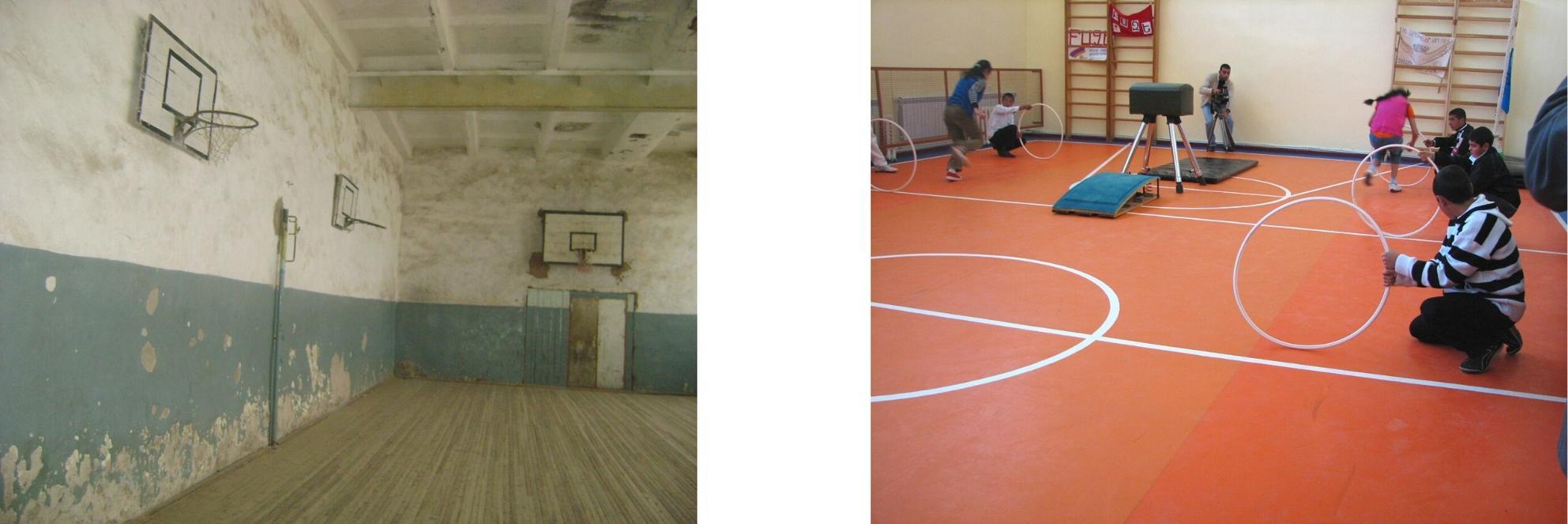
Construction or rehabilitation of rural medical aid posts and equipping them, as well as providing necessary training to nurses, has always been one of our priorities.
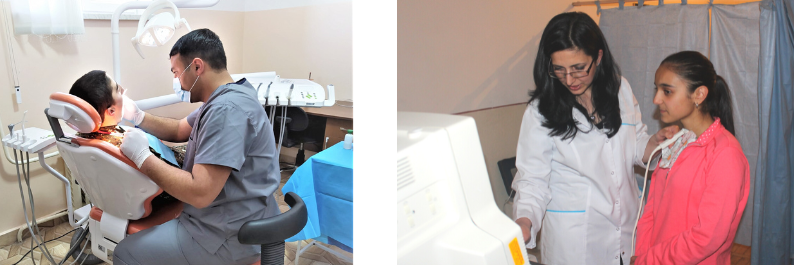
Since 2011 the Union of French-Armenian Doctors of Paris (UMAF), with the support of Shen, has implemented the "Glasses for Armenia" annual programme. The project has benefited residents from Aragatsotn, Vayots Dzor, Gegharkunik, Tavush, Shirak, and Syunik provinces. The doctors from UMAF prepare and provide prescription glasses to the children after passing on-site eyesight checks. The project also serves the elderly population by providing them free of charge glasses. Over these years, more than 2,500 children and 12,000 adults have received reading glasses.
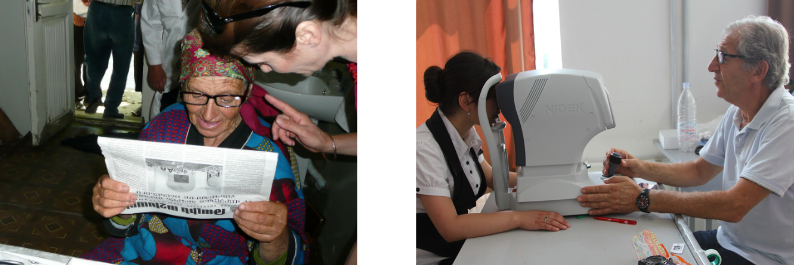
Community Development
Integrated Community Development (ICD) of a vulnerable community or a group of communities is the integration and systemized solution of social, economic, and environmental issues. We actively apply this methodology in many Armenian villages where overall development requires a systemic approach to cover many fields of rural livelihoods. Once essential components of rural infrastructures such as irrigation networks, veterinarian services including artificial insemination, agricultural machinery services, small-scale productions, and the like are in place, it builds a solid basis for the sustainable economic development of communities. The sustainability of all mentioned and several other infrastructures/services profoundly depends on community residents' permanent participation and involvement in decision-making and implementation processes.
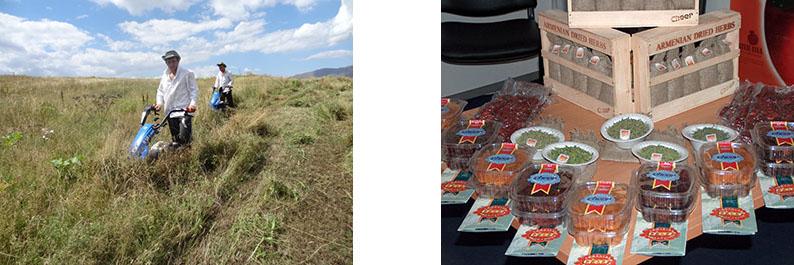
The inception phase starts with Participatory Rural Appraisal carried out with the direct involvement of the whole community. This is followed by convening a community General Meeting where a Community Action Group (CAG) is elected. Furthermore, CAG and our representatives initiate the drafting Community Strategic Plan. This vital process eventually lays the ground for the community's sustainability. Implementation of the ICD model allows sizeable involvement of community members in all planned activities using the capacity of the community and "Shen" NGO to fulfill the planned projects even during the economic crisis effectively.
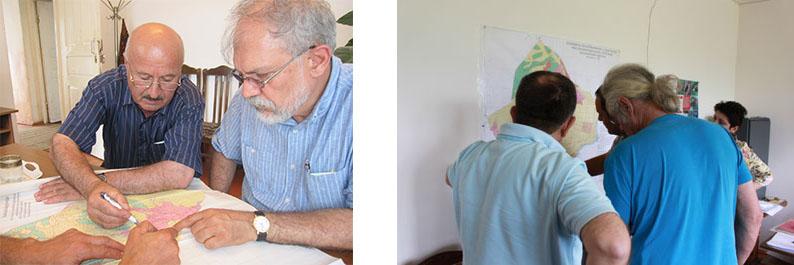
Since 2001 we have adopted the ICD model, and during the past decade, it yielded tangible results in the target communities selected according to our poverty criteria. Projects implemented in many communities from different marzes of the country proved the relevance of the strategy chosen by "Shen" (see Completed Projects). Thus, we witnessed how it is possible to efficiently employ limited resources and achieve sustainability for the community's welfare. In all projects with physical infrastructure rehabilitation or construction components, the beneficiary communities must contribute at least 20% to the project's total cost.
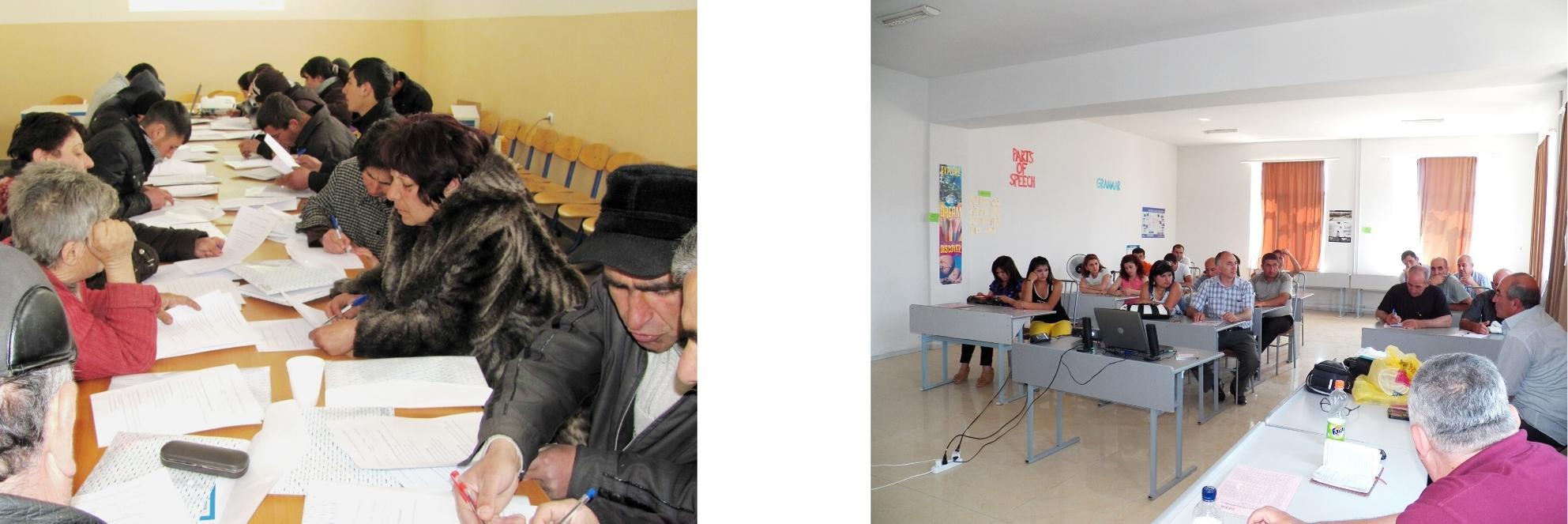
Most importantly, the application of the ICD approach guided the beneficiary communities in the transition from passive service recipients to empowerment and capacity building. After the stage of participation, collaborative planning, and decision-making, the communities get equipped with tools to maintain the accomplished results aiming at sustainability and internally monitor the accomplished tasks. We particularly emphasise transferring that model from the beneficiary community to neighbouring communities.

